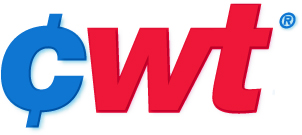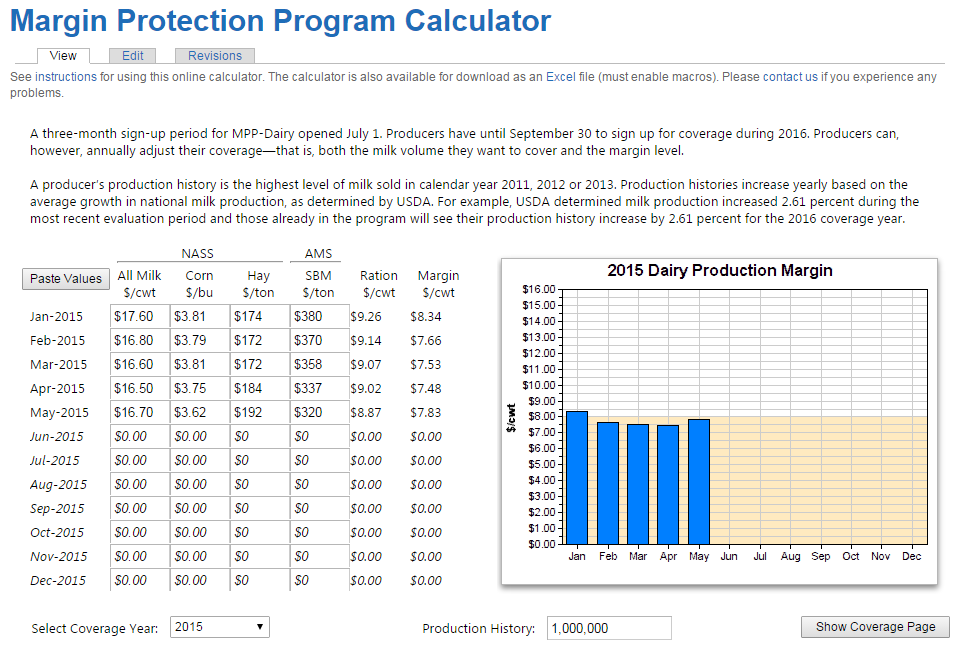The laws of economics, being mostly man-made, are not quite as unassailable as the law of gravity, but the same theory applies to both categories: what goes up, eventually comes down…sometimes with painful results. Dairy farmers have experienced this problematic principle so far in 2015, as milk prices have come down by at least one-third from their record highs of last year.
There is some hope that the worst of the price trough is over, while at the same time, we have important tools to help America’s farmers confront the vicious swings of the economic pendulum: the government’s Margin Protection Program, and the industry’s own Cooperatives Working Together.
Starting this month, the U.S. Department of Agriculture has opened an enrollment window for farmers to obtain insurance coverage for 2016 under dairy’s Margin Protection Program. Until September 30th (unless the USDA further extends the window, as it did in 2014), dairy producers can choose the margin level, and breadth of their production history to cover, under the MPP. Last year, more than half of America’s dairy farmers signed up for the brand-new MPP, and more importantly, about 80% of the U.S. milk supply was enrolled in the program. These figures are an encouraging start to what remains a unique effort to provide a backstop against the type of catastrophically-low margins that we know can occur again in the future.
Through the first four months of this year, the program has generated two bi-monthly payouts, in Jan-Feb., and again in March-April, to those who elected the $8/cwt. margin coverage. Although only about one percent of the farms in the program are covered at that level for 2015, (suggesting that most farmers opted to utilize the program for the catastrophic protection it was designed to address), the payouts demonstrate that the program works as intended when margins are compressed by either high feed costs, low milk prices, or the combination. By comparison, no Milk Income Loss Contract payments would have been generated during the same period, had that now-defunct program still been in existence in 2015.
While farm milk prices are not where we would like to see them right now, it’s worth noting that current margin levels in the $8/cwt. range are close to the average margin level we’ve received over the past 15 years. Farmers can use NMPF’s
www.futurefordairy.com website to help them make decisions about enrollment in the MPP next year.
There are still some issues that NMPF is working with USDA to resolve to enhance the value of the MPP to farmers. One involves getting USDA to allow more flexible payment deadlines, so that farmers have additional choices about when they have to pay premiums for enhanced coverage. The second issue involves greater flexibility on the part of USDA to allow new family members of a dairy operation to obtain coverage as their business expands across the generations. We hope that both these issues can be resolved in the near future, which will only bolster the importance of the MPP in 2016 and beyond.
The other recent, positive development has to do with the future of Cooperatives Working Together. Now in its 13th year, CWT is the only farmer-run program directly enhancing the ability of dairy producers to compete in international markets. Last year, the program provided bonuses to help its members – and, ultimately, to help all of America’s dairy farmers – export the equivalent of 2.5 billion pounds of milk. That’s more than one percent of the nation’s milk production last year. So far in 2015, CWT has contracts to export more than 1.2 billion pounds, milk equivalent, putting the program on pace to at least match last year’s activity.
The gap between U.S. and world prices, and the corresponding need to keep U.S. dairy farmers active in world markets, was the reason CWT’s 37 cooperative members voted a few weeks ago to extend the program through 2018.
CWT’s extension comes at a time when milk production across the country and around the world is still growing, putting downward pressure on prices. As bad as the pricing situation has been domestically in 2015, the price farmers in Europe and Oceania are receiving has been even worse. While U.S. markets are demonstrating some strength, and moving toward better margins, there is no light at the end of the tunnel for fellow dairy producers in other parts of the world. And one of the primary reasons why conditions are improving here is the crucial role that CWT plays in helping farmers in this country.
Current economic forecasts suggests a slow recovery for farmers in the last half of 2015. The pendulum is moving, but gradually. CWT is helping apply momentum, but there are limits to how much can be done in the short run. In the interim, the Margin Protection Program is serving as a firewall against even worse conditions.
Both these efforts are singular, made in America programs that are giving our farmers a bit more respite from the laws of economics.
 allowing a patchwork of state requirements.
allowing a patchwork of state requirements. 


 Failing to heed NMPF concerns about an earlier risk assessment, the Agriculture Department in late June updated its rules to allow imported fresh beef from northern Argentina and 14 states in
Failing to heed NMPF concerns about an earlier risk assessment, the Agriculture Department in late June updated its rules to allow imported fresh beef from northern Argentina and 14 states in 

 The second enrollment period for the
The second enrollment period for the 





